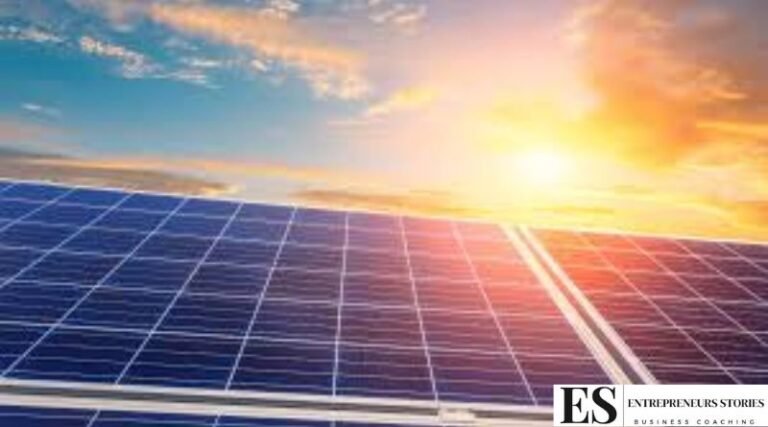Introduction to XCV Panels
In the evolving world of technology and manufacturing, new materials and technologies frequently emerge to meet the increasing demands of various industries. Among these innovations is the XCV panel, a significant advancement that has garnered attention for its versatility and efficiency. This article delves into the essence of XCV panels, exploring their composition, applications, and the distinct advantages they offer across different sectors.
What is an XCV Panel?
An XCV panel is a high-performance material designed for use in various industrial and commercial applications. The term “XCV” refers to a specific type of composite panel characterized by its unique construction and properties. These panels typically consist of multiple layers of materials bonded together to form a robust, lightweight, and durable structure.
The core of an XCV panel often includes a combination of advanced polymers, metals, and other composite materials. This multi-layered approach provides a balance of strength, flexibility, and resistance to environmental factors. The result is a panel that can withstand rigorous conditions while maintaining its structural integrity.
Composition and Structure of XCV Panels
The composition of XCV panels is key to their performance and versatility. These panels generally feature three primary components:
- Core Material: The core of an XCV panel is usually made from a lightweight, high-strength material such as expanded polystyrene (EPS), polyurethane (PU), or honeycomb structures. This core provides the panel with its core strength and insulating properties.
- Face Sheets: The outer layers, or face sheets, are typically composed of high-strength materials such as aluminum, steel, or fiberglass. These face sheets add to the panel’s durability and contribute to its resistance to physical and environmental stressors.
- Bonding Agent: A specialized adhesive or bonding agent is used to adhere the core material to the face sheets. This adhesive is chosen based on its compatibility with the materials involved and its ability to provide a strong, lasting bond.
Applications of XCV Panels
XCV panels are utilized across a range of industries due to their adaptable nature and superior performance. Some notable applications include:
- Construction: In the construction industry, XCV panels are used in the fabrication of walls, roofs, and facades. Their lightweight yet sturdy nature makes them ideal for both residential and commercial buildings. The panels offer excellent thermal insulation, contributing to energy efficiency in buildings.
- Transport: The automotive and aerospace sectors benefit from the use of XCV panels for vehicle and aircraft components. Their lightweight properties help reduce overall weight, which can lead to improved fuel efficiency and performance.
- Marine: In marine applications, XCV panels are used in boat and ship construction. The panels’ resistance to moisture and corrosion makes them suitable for the harsh marine environment.
- Industrial: Various industrial applications employ XCV panels for machinery enclosures, partitions, and equipment covers. The panels provide durability and protection in environments with high wear and tear.
Advantages of XCV Panels
The adoption of XCV panels in various industries is driven by several key advantages:
- Lightweight: One of the most significant benefits of XCV panels is their lightweight nature. This property reduces the overall weight of structures and components, leading to cost savings in transportation and installation.
- Durability: XCV panels are designed to withstand harsh conditions, including extreme temperatures, moisture, and physical impacts. Their durability ensures a longer lifespan and reduced maintenance requirements.
- Thermal Insulation: The core material of XCV panels provides excellent thermal insulation, contributing to energy efficiency in buildings and reducing heating and cooling costs.
- Acoustic Performance: XCV panels also offer good acoustic performance, helping to reduce noise levels in various environments. This feature is particularly beneficial in construction and industrial applications where soundproofing is essential.
- Versatility: The adaptability of XCV panels allows them to be used in a wide range of applications. Their customizable nature means they can be tailored to meet specific requirements, whether it’s for structural integrity, insulation, or aesthetic purposes.
- Eco-Friendly: Many XCV panels are produced with recyclable materials and processes that minimize environmental impact. This aligns with sustainability goals and contributes to greener building practices.
Challenges and Considerations
While XCV panels offer numerous benefits, there are also some challenges and considerations to keep in mind:
- Cost: The initial cost of XCV panels can be higher compared to traditional materials. However, the long-term savings in maintenance and energy efficiency often justify the investment.
- Installation: Proper installation is crucial to ensure the panels perform as intended. Incorrect installation can lead to issues such as reduced durability or compromised insulation properties.
- Environmental Impact: While many XCV panels are designed to be eco-friendly, it’s essential to consider the entire lifecycle of the product, including production and disposal, to fully understand its environmental impact.
Future Trends in XCV Panel Technology
The field of XCV panels is continually evolving, with ongoing research and development aimed at enhancing their performance and expanding their applications. Future trends may include:
- Enhanced Materials: Advances in material science may lead to the development of even more efficient core materials and face sheets, further improving the performance of XCV panels.
- Smart Panels: The integration of smart technologies into XCV panels could enable features such as real-time monitoring of structural health or energy consumption.
- Sustainability: Continued focus on sustainability may drive innovations in the production and disposal of XCV panels, making them even more environmentally friendly.
Conclusion
XCV panels represent a significant advancement in composite material technology, offering a combination of strength, durability, and versatility that meets the demands of various industries. From construction and transport to marine and industrial applications, the benefits of XCV panels are evident in their ability to provide effective solutions to modern challenges. As technology continues to advance, the potential for XCV panels to contribute to more sustainable and efficient practices is promising. Understanding their composition, applications, and advantages helps in making informed decisions about their use, ultimately enhancing the performance and longevity of the structures and components they are a part of.
Read also: check

